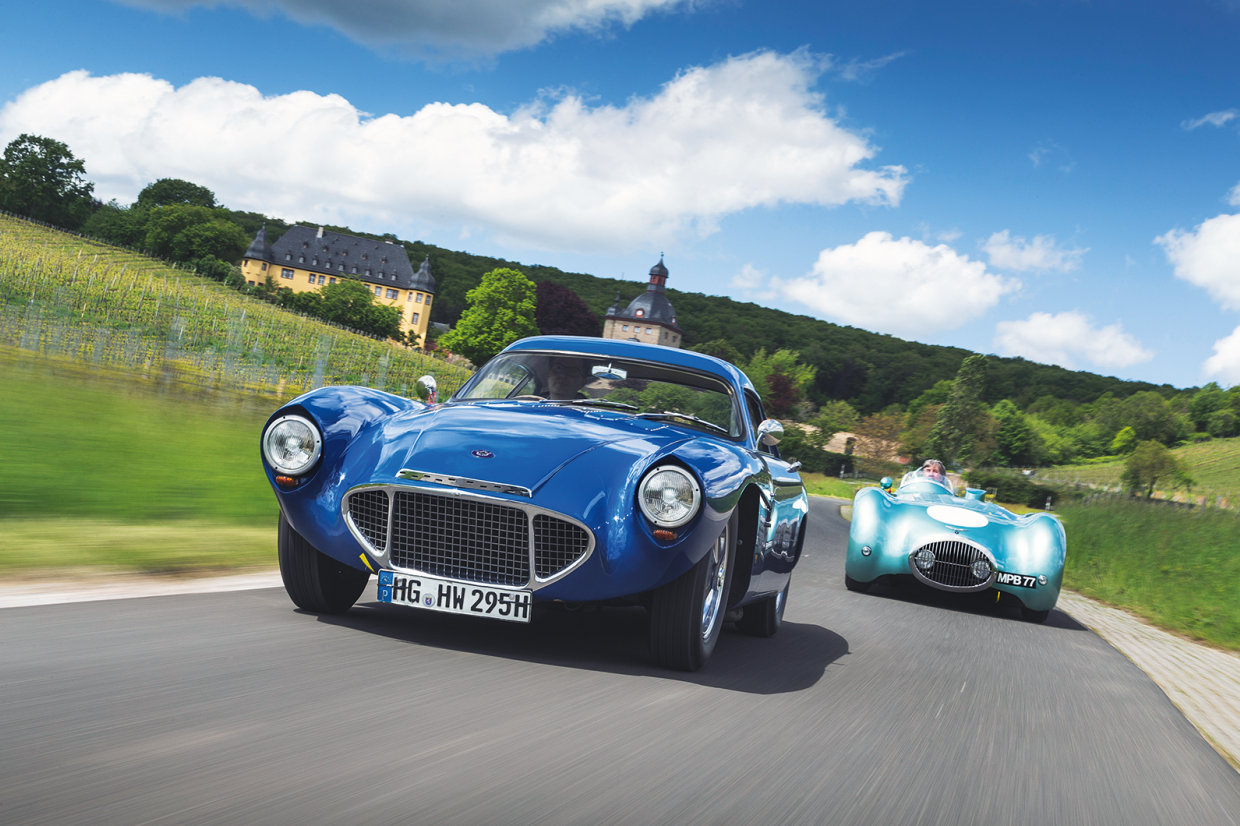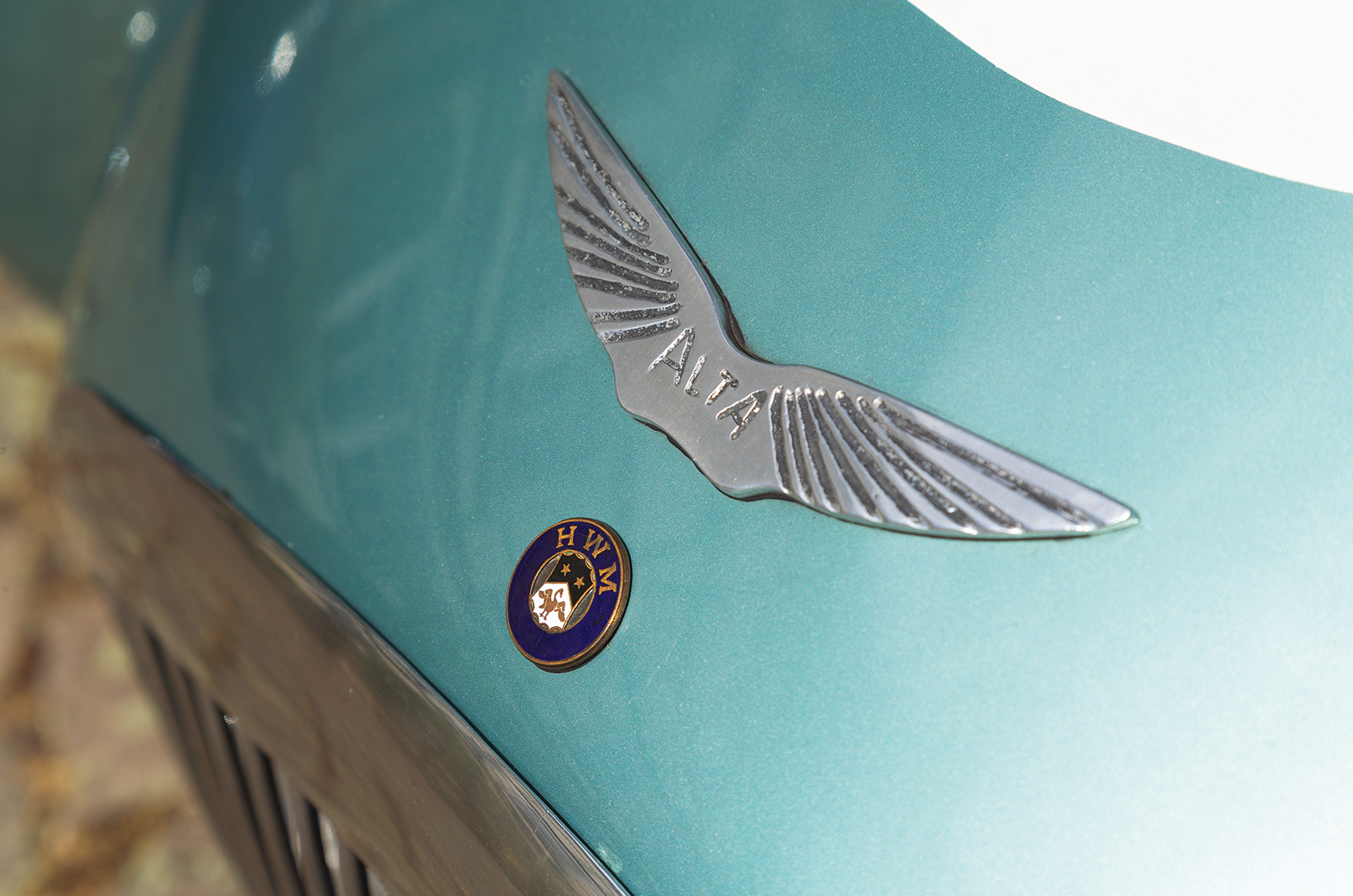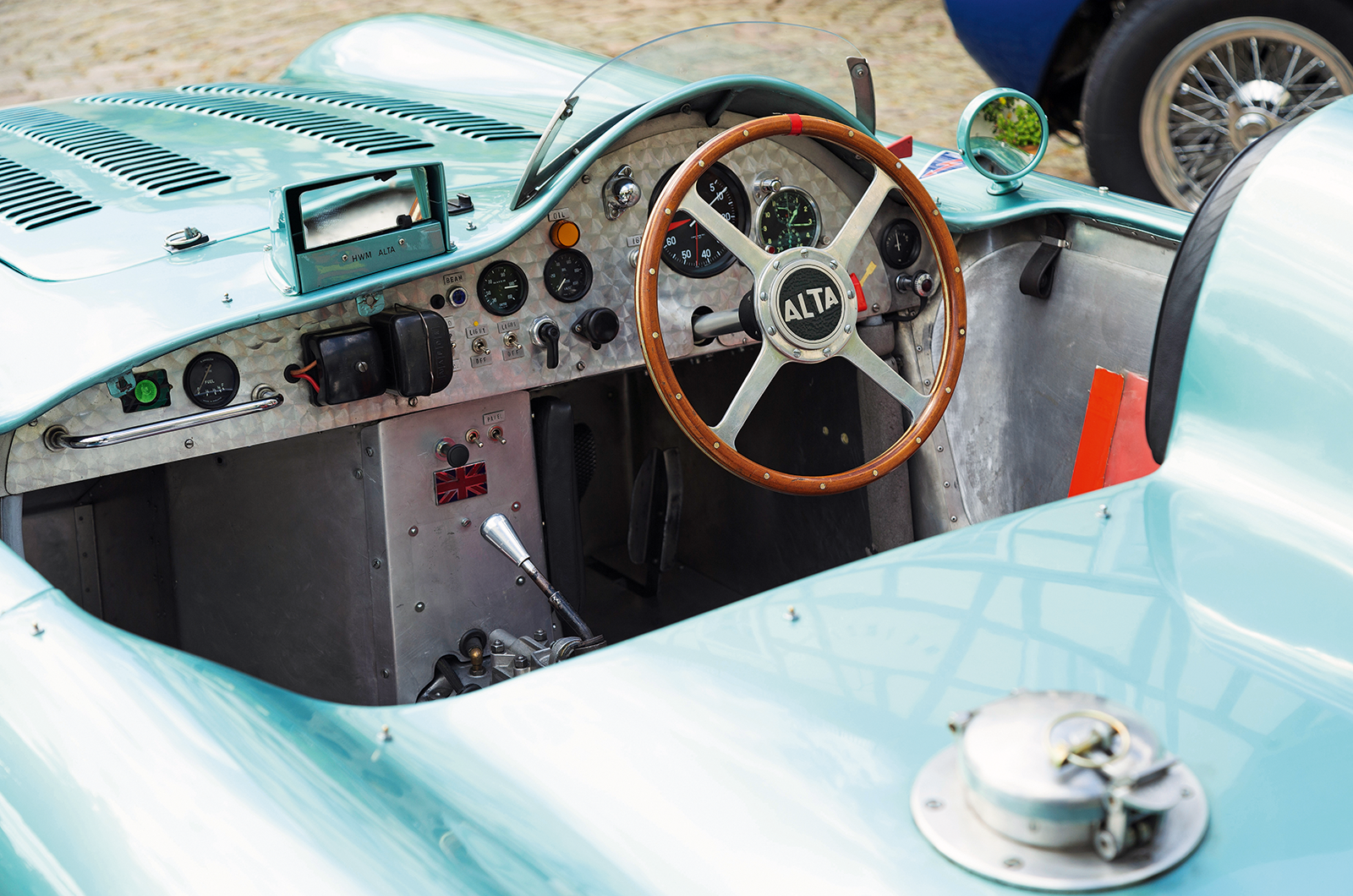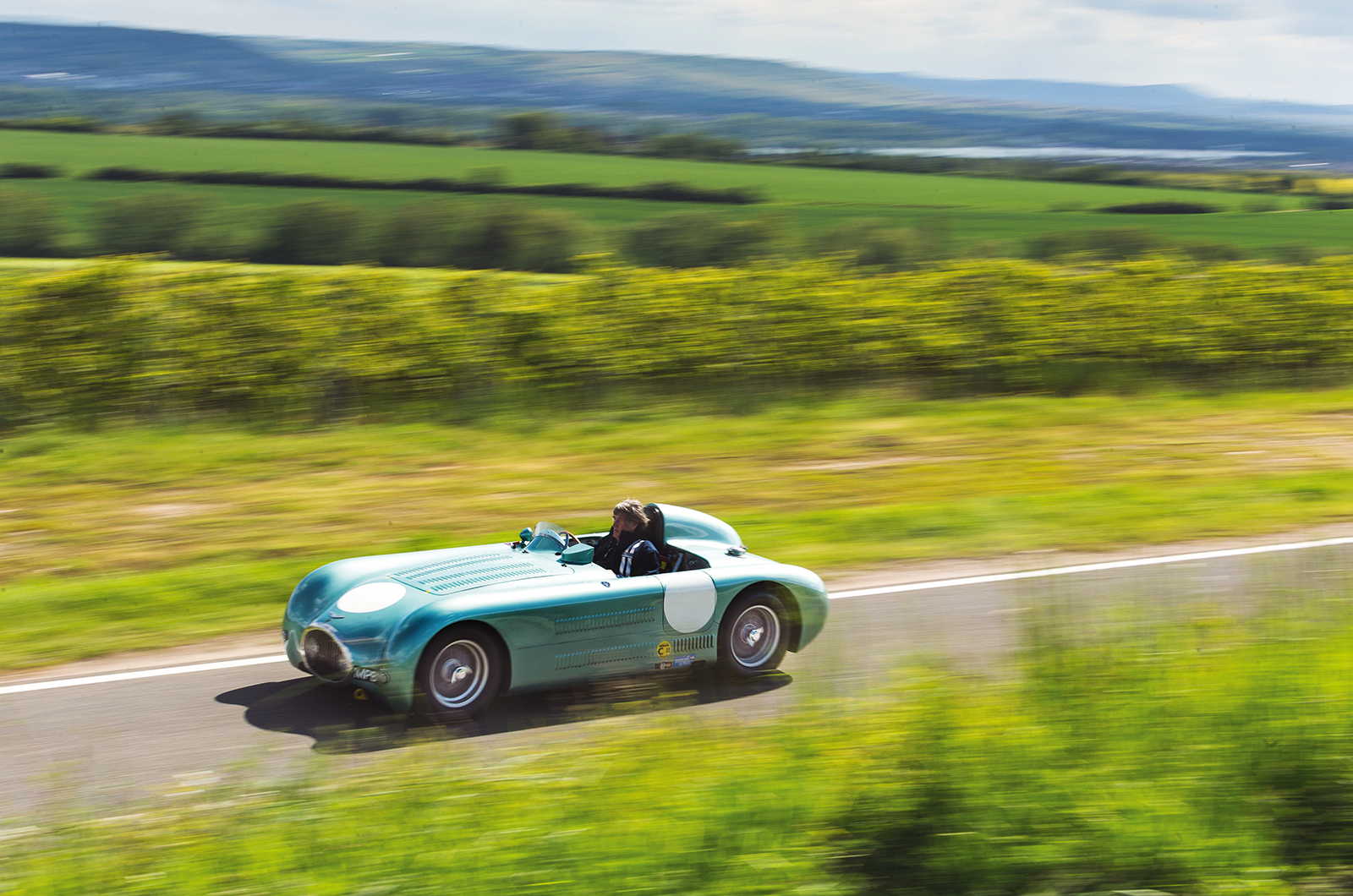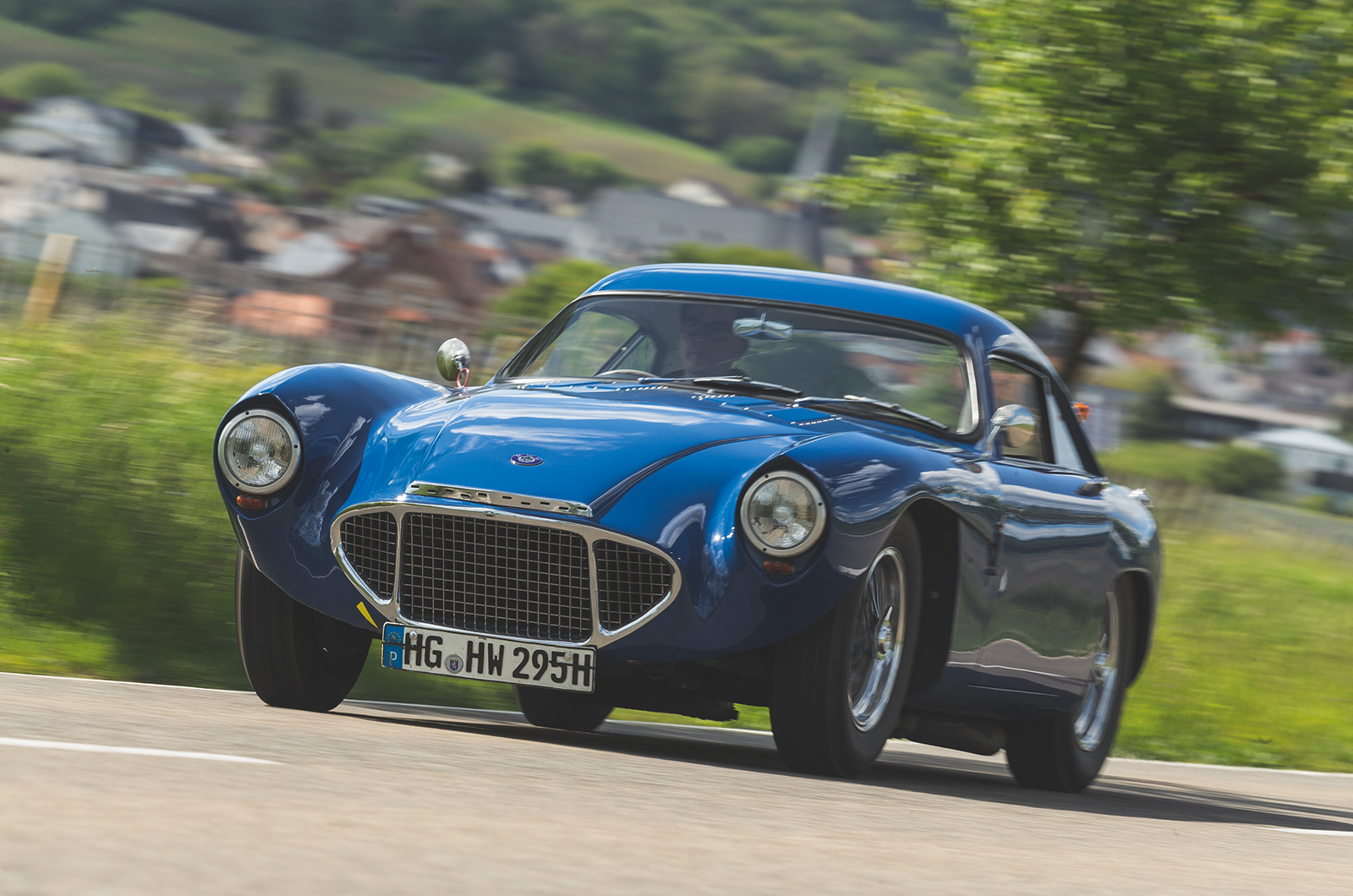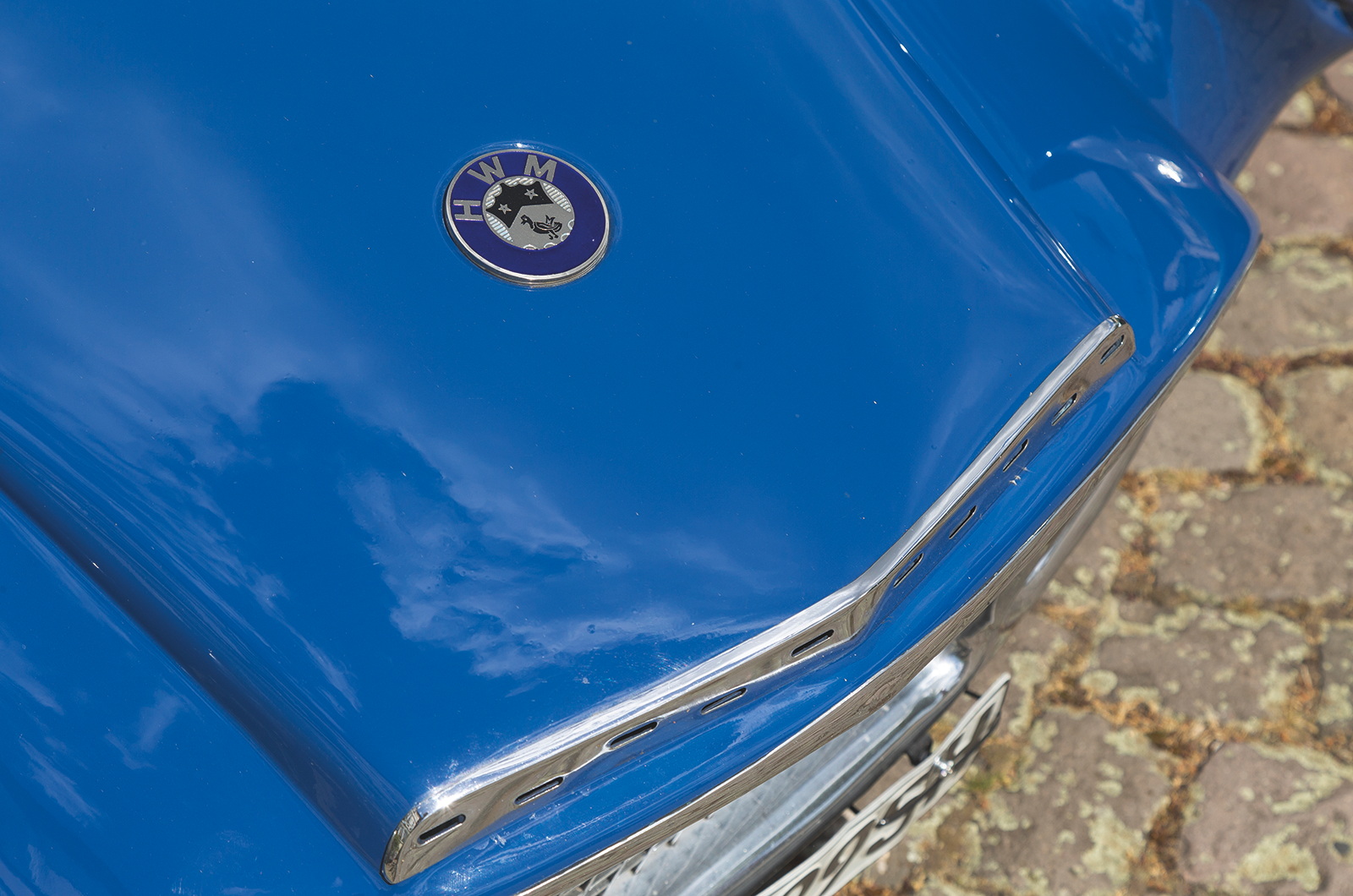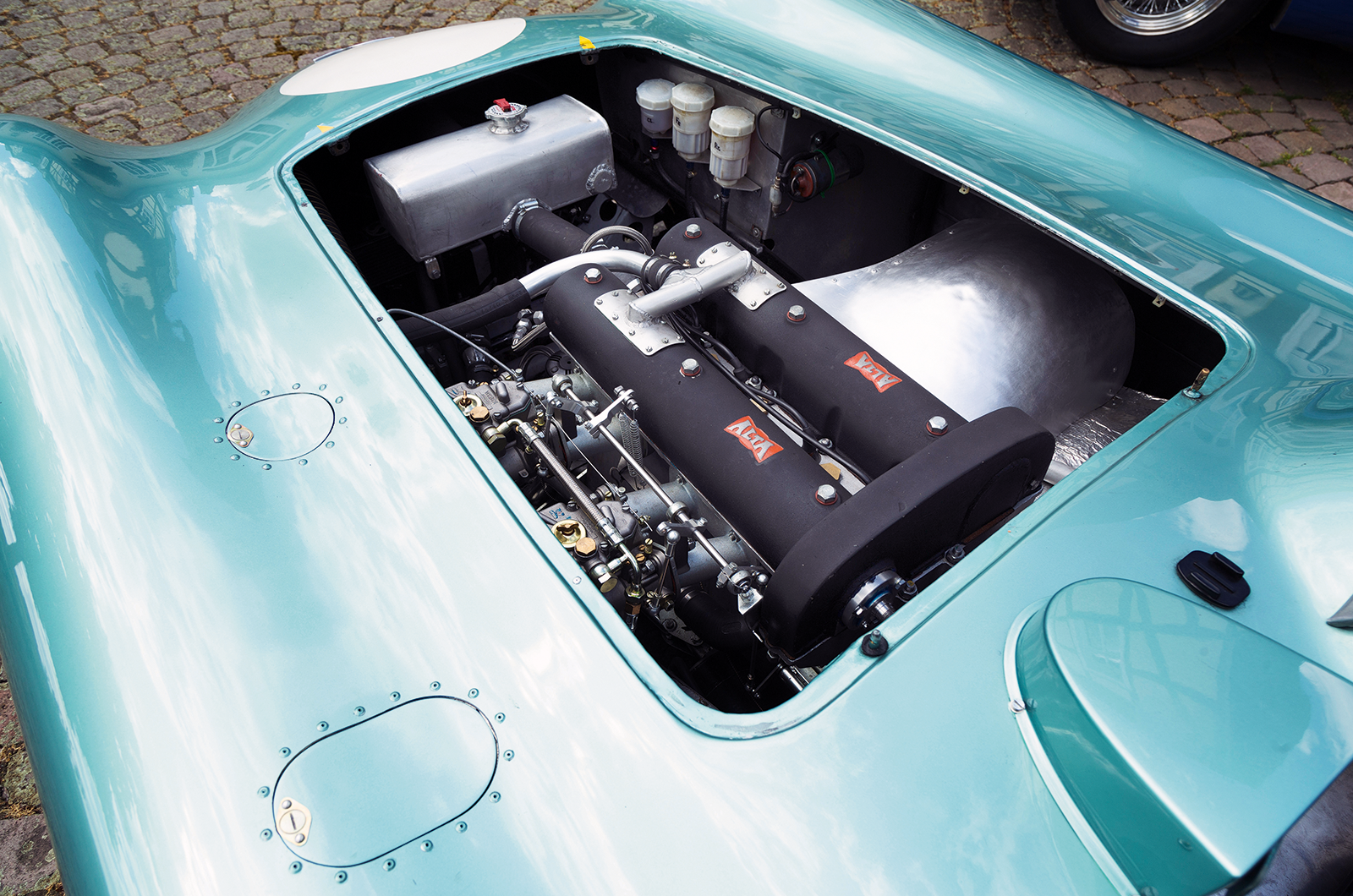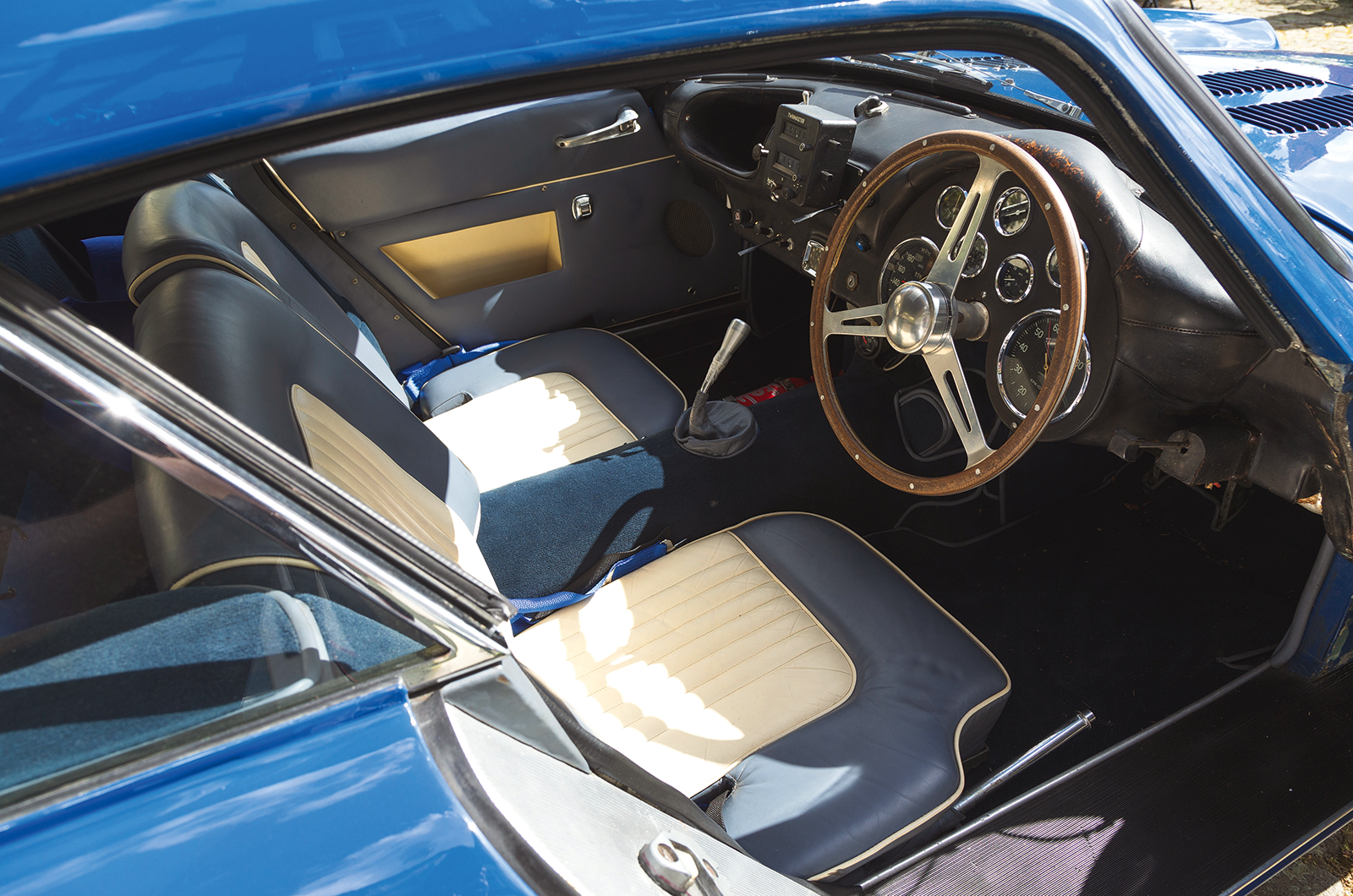The real pleasure of the first HWM comes when pushing hard through the undulating curves of the country roads Willems has chosen for us.
The independent front suspension fitted in 1949 is by Triumph-derived transverse leaf and wishbones, and the steering comes from the front-drive Citroën, one of the most sure-footed cars of its day.
In this application it’s light and accurate, if low-geared by modern standards. The brakes, under road conditions at least, do their job well, with a good hard pedal.
The car feels balanced and responsive, which is why Willems is delighted with the transformation back to Alta-engined form.
Not only is it lighter than with the Jaguar unit, but the weight distribution has also moved back towards the centre of the car, and on the track this has become a far more effective machine.
Despite the loss of 100bhp or so, it is now 4 secs a lap faster around the new Nürburgring. Not just for history have Willems and Tollenaar done the right thing by recreating the HW-Alta.
The Coupé’s beautifully trimmed cockpit is still in its original white and blue leather, with fully stocked dash and the traditional cranked gearlever of the Jaguar gearbox
So to the Coupé. I had long been intrigued by photos of it, but in the metal it looks much better, and different elements that seemed to quarrel come together into a very effective whole.
From its thrust-forward grille to its tunnelled rear lights (don’t tell anyone, but they’re from a Series IIIB Hillman Minx) it looks long, low and crouching, ready to spring.
Dr Schnedler has returned it to the mid-blue that George Abecassis chose, set off by gleaming Borrani wheels and the drilled Alfin drums behind.
Inside, the trim in blue and white leather is mostly original, and the seats are soft and comfortable. The wheel is an easy stretch away and headroom is sufficient for me, although 6ft-plus Abecassis said it was too cramped.
The fully-stocked instrument panel boasts a huge 8000rpm tacho and matching 180mph speedo, and the plush carpeting and electric windows are intact, although I didn’t try the radio.
The unique, low-slung two-door seems to hug the road
Driving off, the Coupé feels every bit as quick as a well-sorted E-type. Based as it is on a sports-racing car I expected it to be noisy inside, but the road exhaust and sound insulation work very well.
The water temperature has risen during the repeated stop-start of the photo session, and some of this heat finds its way into the cockpit, and the brakes are a bit soft at the moment.
But the steering and handling are all that I expected. If this car had been the product of a larger specialist maker and gone into limited production, it could have been a sensation.
As it is, this is a very fast and practical road car, which boasts the additional attraction that you will never, ever see another one.
That goes for The Streamliner, too, and for pretty much all of the remaining 17 of the 19 HWMs built, for none was quite the same.
Today few remember the marque, but the cars of Hersham & Walton Motors put this country on the motor-racing map in those difficult early post-war years.
In doing so, they sowed the seed of an industry in which Britain has led the world for more than half a century.
Images: Luc Lacey
Simon Taylor’s two-volume, 528-page book John, George and the HWMs is published by Evro and priced at £130 (ISBN 978 1 910505 32 8)
HWM timeline
19 cars were made in total; the number of new chassis built each year is given in brackets
- 1948 The Streamliner (1)
- 1949 The first open-wheeler, with offset cockpit and detachable cycle wings for sports car racing. Heath wins Manx Cup (1)
- 1950 Three-car team of offset single-seaters is raced in six countries by Moss, Macklin, Abecassis and others. Claes wins the Grand Prix des Frontières; Moss finishes third in Formula One Bari Grand Prix (4)
- 1951 Pure F2 single-seaters, up to four cars run in 26 meetings across Europe (5)
- 1952 Improved single-seaters. Moss leaves, Collins joins. Macklin wins the Silverstone International Trophy (4)
- 1953 1952 cars are radically rebuilt. First HWM-Jaguar sports car is built on a 1951 F2 chassis raced successfully by Abecassis
- 1954 Adapted 1952/’53 chassis is briefly used in F1, then converted to Jaguar power and written off at Goodwood. Three more sports cars are built on 1951 single-seater chassis, two Jaguar-engined and one with a Cadillac V8
- 1955 First Series Two HWM-Jaguar, smaller and lighter, is built for Abecassis (1)
- 1956 Second Series Two HWM-Jaguar, crashed fatally by Heath in the Mille Miglia (1)
- 1957 HWM-Jaguar hillclimb car built for Phil Scragg, and Coupé build commences (2)
READ MORE
Jaguar D-type vs Aston Martin DB3S: Won for the road
Motorsport memories: the year Aston aced it
It’s an XK120 – but not as you know it
Simon Taylor
Simon Taylor is C&SC’s Editor at Large and has been associated with the brand since he launched it in 1982
